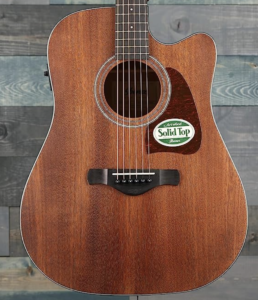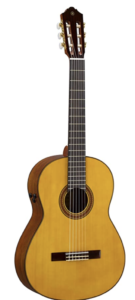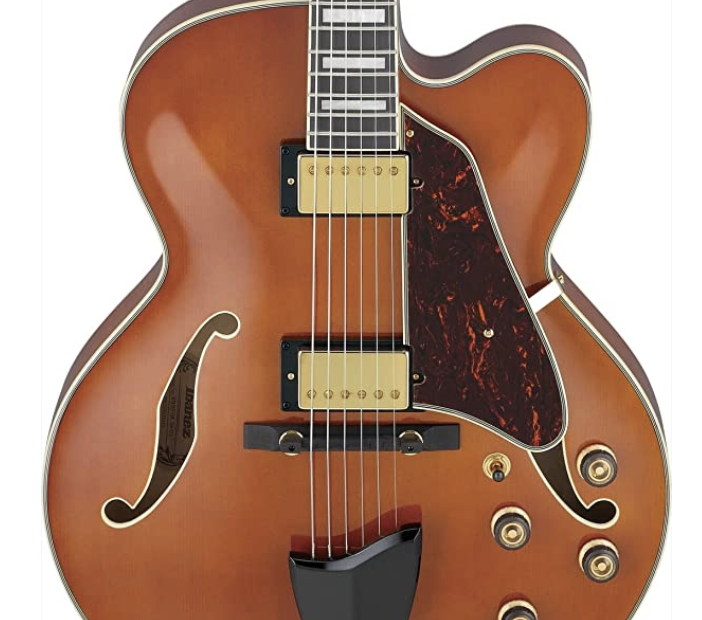The modern guitar, as we know it today, has a complex history and has evolved over centuries. Who invented the guitar is a common question among players. Its invention cannot be attributed to a single individual, as various cultures and civilizations contributed to the development of stringed instruments that eventually led to the guitar we know today.
Ancient Origins of the Guitar
 The guitar’s origins can be traced back thousands of years to ancient civilizations such as the Babylonians, Egyptians, Greeks, and Romans, who had instruments with strings and a resonating body. These early instruments were the precursors to the guitar and laid the foundation for its design and construction.
The guitar’s origins can be traced back thousands of years to ancient civilizations such as the Babylonians, Egyptians, Greeks, and Romans, who had instruments with strings and a resonating body. These early instruments were the precursors to the guitar and laid the foundation for its design and construction.
In terms of the modern guitar’s development, several key milestones can be noted. During the 12th century in Europe, the guitar started to take shape with the introduction of the “guitarra latina” and “guitarra morisca.” These instruments had a rounded back, a soundhole, and several strings, resembling the basic elements of the guitar.
In the following centuries, the guitar continued to evolve, with notable advancements occurring during the Renaissance and Baroque periods. Builders and musicians experimented with different body shapes, string configurations, and playing techniques. The six-string design, similar to the modern guitar, gained popularity during this time.
Also Read:
Guitar History Facts That Will Blow Your Mind
Seven Master Classic Rock Guitar Players
6 of the Best Guitar pedal power Supplies
Choosing the Best Reverb Guitar Pedal
Best Popular Guitar Stand Models
Torres Jurado (Guitar Inventor?)
 In the late 18th and early 19th centuries, Spanish luthiers played a crucial role in refining the design of the guitar. Builders like Antonio de Torres Jurado, Francisco Sánchez, and Ignacio Fleta introduced improvements in construction techniques, bracing patterns, and materials, resulting in the development of the classical guitar as we know it today.
In the late 18th and early 19th centuries, Spanish luthiers played a crucial role in refining the design of the guitar. Builders like Antonio de Torres Jurado, Francisco Sánchez, and Ignacio Fleta introduced improvements in construction techniques, bracing patterns, and materials, resulting in the development of the classical guitar as we know it today.
One significant figure in the guitar’s history is Antonio de Torres Jurado, a Spanish luthier from the 19th century. Torres is often credited with the one who invented the guitar, refining the design of the modern classical guitar. He introduced structural enhancements, such as the fan bracing system, which improved the instrument’s tone and projection. Torres’s innovations laid the foundation for the classical guitars we see today.
It’s important to note that the guitar’s development was a collective effort influenced by musicians, instrument makers, and cultural exchanges across different regions and time periods. While specific individuals made notable contributions, the guitar’s invention is the result of a long and intricate evolution rather than the work of a single inventor.
Evolution of the Guitar
The guitar has a fascinating history that dates back to ancient times. It can trace its origins to instruments like the lyre, oud, and lute, which were played in civilizations such as Mesopotamia, Egypt, Greece, and Persia. These early stringed instruments had a resonating body and multiple strings, forming the foundation for what would become the guitar.
As time passed, the guitar underwent significant advancements during the Renaissance and Baroque periods. European luthiers experimented with different shapes, sizes, and string configurations, and it gained popularity among nobility and musicians of the time.
During the late 19th and early 20th centuries, steel-string guitars gained popularity. These guitars had steel strings instead of gut strings, producing a brighter and louder sound. They found their place in various musical genres, including folk, country, and blues, and influenced the development of modern acoustic and electric guitars.
Invention of the Electric Guitar
 The invention of the electric guitar in the early 20th century was a game-changer. Innovators like Adolph Rickenbacker, George Beauchamp, and Les Paul contributed to the development of electric guitars with magnetic pickups and amplification systems. The electric guitar’s ability to produce a louder sound and sustain opened up new possibilities for musicians and led to the emergence of genres like rock ‘n’ roll.
The invention of the electric guitar in the early 20th century was a game-changer. Innovators like Adolph Rickenbacker, George Beauchamp, and Les Paul contributed to the development of electric guitars with magnetic pickups and amplification systems. The electric guitar’s ability to produce a louder sound and sustain opened up new possibilities for musicians and led to the emergence of genres like rock ‘n’ roll.
Today, we have a wide range of guitar designs and styles. From classical and acoustic guitars to electric and hybrid models, there is something for every player. Guitar manufacturers continue to innovate with materials, electronics, and construction techniques to cater to different playing styles and preferences. Custom guitar builders and individual luthiers also play a significant role in pushing the boundaries of guitar design and craftsmanship.
Historical Use of the Guitar
The guitar is a truly fascinating instrument with a rich history and immense influence on music. It has found its way into various genres, including rock, pop, jazz, blues, country, and classical, to name a few.
One of the reasons the guitar has remained so popular is its incredible versatility. It can adapt to different musical styles and techniques, making it a favorite among musicians. From the delicate tones of classical and fingerstyle playing on nylon-string guitars to the bright sound of steel-string acoustics in folk and rock genres, and the wide range of tones produced by electric guitars, the instrument offers something for everyone.
 Throughout history, many guitarists have left an indelible mark on the instrument and its evolution. Icons like Jimi Hendrix, Eric Clapton, and Jimmy Page have redefined what’s possible on the guitar, inspiring countless players to follow in their footsteps. Today, contemporary guitarists like John Mayer and Slash continue to push boundaries with their virtuosity and innovative approaches.
Throughout history, many guitarists have left an indelible mark on the instrument and its evolution. Icons like Jimi Hendrix, Eric Clapton, and Jimmy Page have redefined what’s possible on the guitar, inspiring countless players to follow in their footsteps. Today, contemporary guitarists like John Mayer and Slash continue to push boundaries with their virtuosity and innovative approaches.
Effects pedals and amplification have played a significant role in shaping the guitar’s sound. Guitarists can use pedals to add effects like distortion, delay, reverb, and modulation, allowing them to create unique tones and textures. Amplifiers, whether tube-based or solid-state, have helped amplify the guitar’s sound and give it character.
Personalization is also a big part of the guitar world. Many guitarists customize their instruments to suit their preferences, whether it’s modifying electronics, changing pickups, or even creating unique paint finishes and inlay designs. Guitar manufacturers also continue to innovate, incorporating new technologies, materials, and features to meet the needs of musicians.
Timeline of Guitar Invention and Who Invented the Guitar
 Ancient Origins (2000 BCE – 500 CE): The earliest known stringed instruments resembling the guitar can be traced back to ancient civilizations, such as the Hittites, Egyptians, and Greeks. These instruments featured a simple body and a varying number of strings.
Ancient Origins (2000 BCE – 500 CE): The earliest known stringed instruments resembling the guitar can be traced back to ancient civilizations, such as the Hittites, Egyptians, and Greeks. These instruments featured a simple body and a varying number of strings.- Moorish Influence (8th – 15th century): During the Moorish occupation of Spain, the lute emerged as a popular instrument. Its design and playing techniques heavily influenced the development of the guitar, introducing features like a rounded back, frets, and a soundhole.
- Renaissance and Baroque Era (15th – 18th century): The guitar evolved further during the Renaissance and Baroque periods, with improvements in construction techniques and the addition of extra strings. The instrument gained popularity in Europe, especially in Spain, Italy, and France.
- Classical Guitar (19th century): The modern classical guitar, as we know it today, emerged in the early 19th century. Builders like Antonio de Torres and Hermann Hauser Sr. made significant advancements in guitar design, introducing innovations such as the fan bracing system and increasing the guitar’s volume and projection.
- Steel-String Acoustic Guitar (Early 20th century): In the early 20th century, steel-string acoustic guitars gained popularity, particularly in the United States. These guitars featured a larger body, steel strings, and a brighter, louder sound, making them well-suited for genres like folk, blues, and country.
- Electric Guitar (1930s – 1950s): The invention of the electric guitar revolutionized music. In the 1930s, pioneers like George Beauchamp and Adolph Rickenbacker developed the first electric guitars with magnetic pickups. Later, innovators such as Les Paul and Leo Fender further refined electric guitar design, leading to iconic models like the Gibson Les Paul and Fender Stratocaster.
- Modern Innovations (1960s – present): In the 1960s and beyond, guitarists began experimenting with effects pedals, amplifiers, and guitar synthesizers, expanding the possibilities of guitar sounds. Advancements in technology led to the development of digital effects, modeling amps, and MIDI-equipped guitars, further pushing the boundaries of what can be achieved with the instrument.
